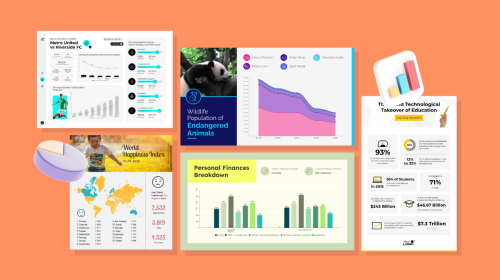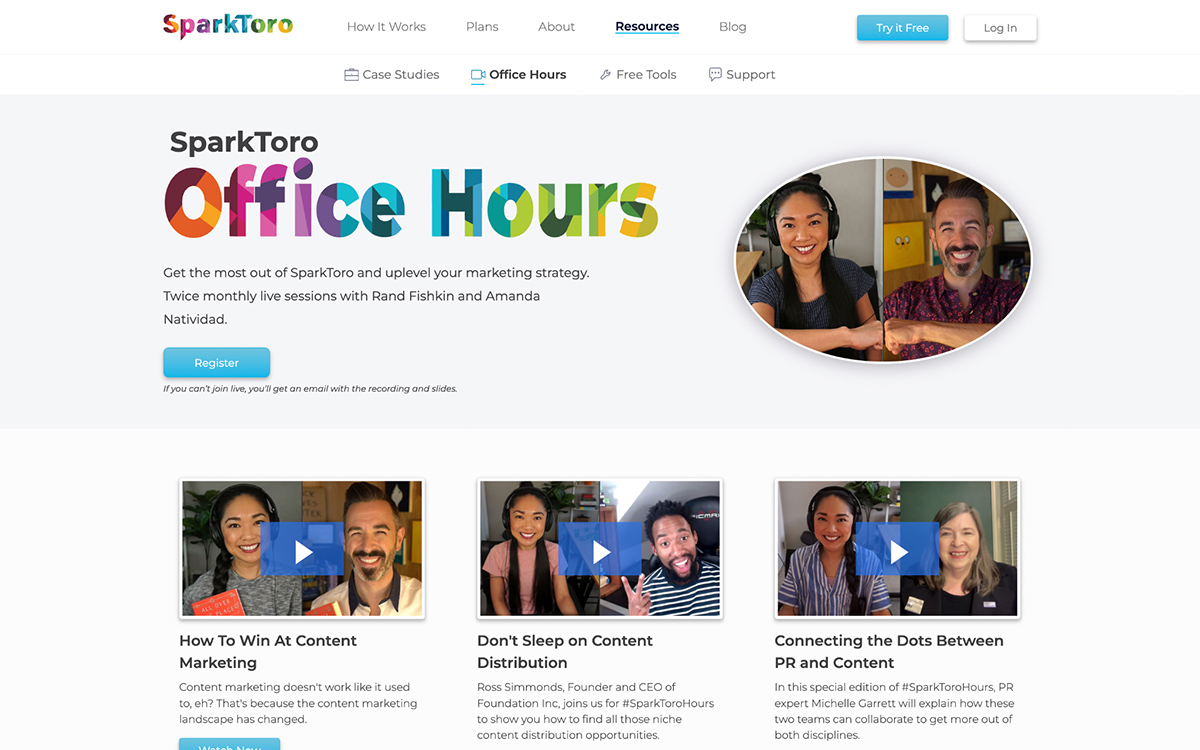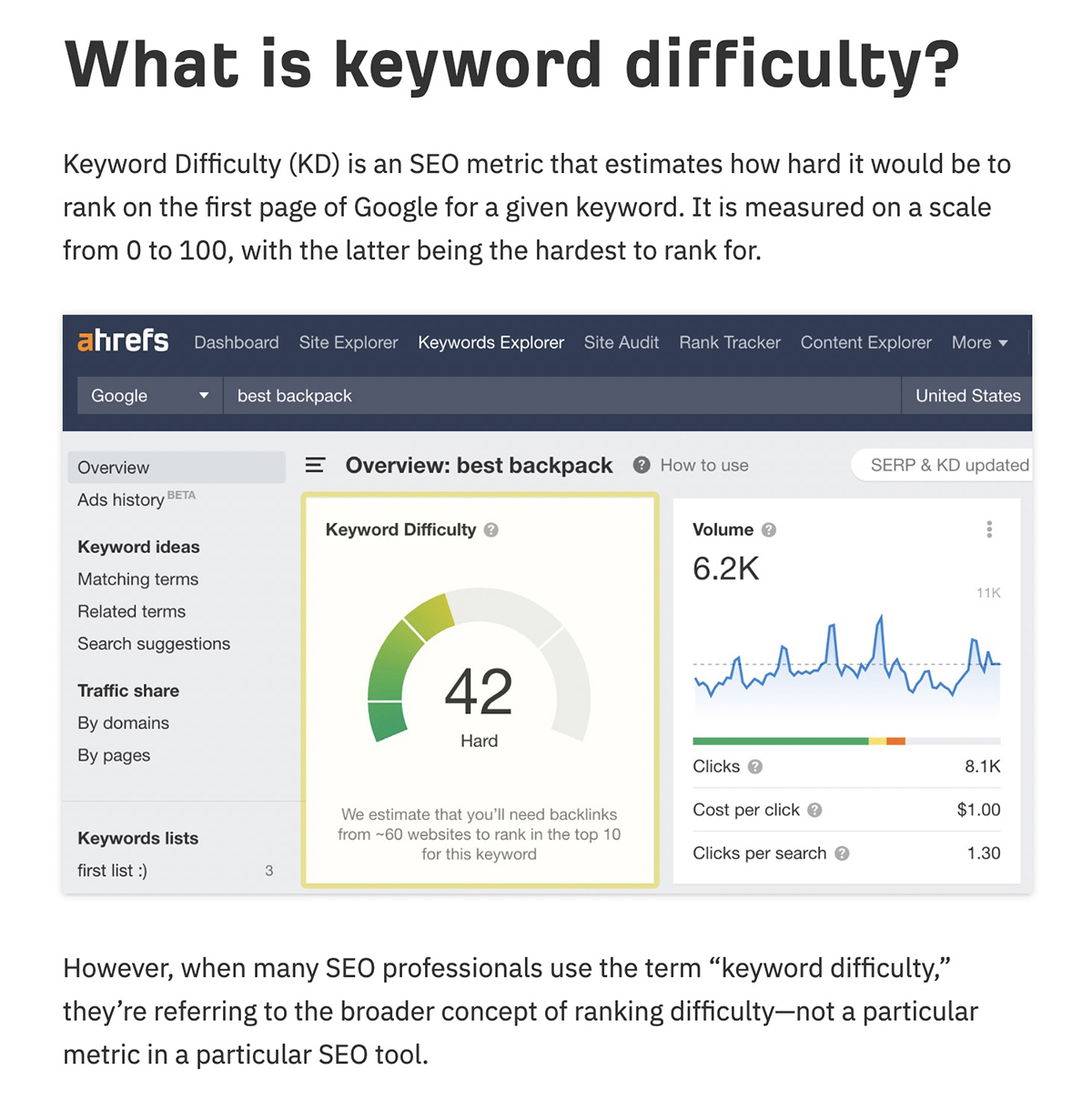
9 Great Examples of Inbound Marketing That Win Customers


Looking for some winning inbound marketing examples for inspiration?
We’ve got your back as we dive into breaking down nine of the best inbound marketing examples and what works about them. We’ve also got tips on how to use the tactic for yourself.
First things first, though: inbound marketing requires consistency.
You have to plan, put in the work and execute your thought-out strategy before it starts showing results. So, patience is key.
With that, let’s dive into the meaty bit.
Inbound marketing is a marketing tactic that relies on creating valuable content to attract, engage and convert your audience.
Keep in mind that the content that you create should be relevant to your target audience. It’s why studying your audience’s struggles and pain points is a good starting point for inbound marketing.
Unlike outbound or traditional marketing, inbound marketing doesn’t rely on tactics like cold outreach. Instead, it focuses on creating and distributing content in places where the audience is.
For example, if you’re targeting B2B professionals who spend a lot of time on LinkedIn, it’s best to create content for LinkedIn.
In short, inbound marketing is a great way to build trust with your target audience by offering value. This could be by educating them, inspiring them and/or entertaining them.
Because of this value-focused approach, this type of marketing is commended for helping build brand authority, earning your target buyer’s trust and making loyal customers.
Let’s now walk you through the creative ways brands are getting their audience’s attention and making loyal customers:
Instead of creating generic content that regurgitates what’s already ranking on the topic, the Animalz’ team creates content based on original thought.
To this end, authors rely on their daily experience to produce impressive content — even using illustrations and graphics to explain their point.
Take this post from the blog, for instance.

Instead of sourcing a stock image, the post uses a well-designed blog graphic that adds to the content’s message.
What’s interesting is that the Animalz team uses such graphics throughout their blog content.
This piece, for example, features an explanatory graphic.

Again, it supplements the author’s message, therefore, making it a strategic addition to the content.
Start with thought leadership content by talking to subject matter experts.
Ask them for insider stories, insights and their experiences to create helpful content that’s also unique.
And for the blog graphics, Visme’s got your back.
You can both DIY create header and in-body graphics in our design tool and collaborate with your team to design them.
If you’re a team of one with lots on your plate, using Visme's blog graphic templates is a time-saving idea to put together high-quality graphics within minutes.

This search engine optimization tool hosts webinars on topics important to its audiences with the aim of educating them on how present-day SEO works.
The best part? Their team invites experts to share their insights on a given topic.
This works because:
Often, experts co-hosting the webinar with the Clearscope team also explain how they use the tool in their workflow.
Not only does this bring social proof into the picture, but it also subtly educates viewers on how Clearscope can benefit them.
Research the topics that are important to your audience. Then, reach out to experts on the topic and invite them to your webinar.
For this strategy to be successful though, it’s essential you review all the content that experts will present. And if you have to, offer help with creating their presentation slides as those play a critical role in engaging viewers.
Luckily, Visme’s presentation templates make designing decks a breeze.

Pick one and replace the placeholder text with the content the experts share. Next, customize the design (font and colors) as needed. And you’re done.
All this will help you make sure only high-quality sessions are delivered to your viewers.
Chewy, an online pet food retailer, takes a highly audience-engaging approach on its Instagram. How? By educating its followers.
It does so by using different content types including live Ask Me Anything (AMA) sessions with vets and bite-sized video tutorials.
View this post on Instagram
Chewy also talks about its product — not in a salesy way though. Instead, they show their products in action. For example, this post shares a raincoat available at its store.
View this post on Instagram
One last thing that’s worth learning from Chewy’s inbound marketing example: they mix branded image-based Instagram posts with animated ones to stand out on the busy visual platform.
View this post on Instagram
Apart from the educational content, what makes Chewy’s inbound marketing strategy effective is its visual content.
So to execute this strategy well, you’ll need to do two things. One, create content such as Instagram captions and outlines for live sessions that educates.
And, two, get a Visme account to create social media graphics — here’s how:
Another inbound marketing tactic is to get a founding team member to build or leverage their social media audience.
Maven, a cohort-based course creation platform takes this approach as its founder, Wes Kao writes comprehensive, value-packed Twitter threads.
At the end of the thread, Kao typically plugs Maven. This helps them grow brand awareness and drives traffic to their program too.
Most companies suck at on-boarding new team members.
Here's how to on-board yourself when starting a new job:
— Wes Kao 🏛 (@wes_kao) May 8, 2022
The last tweet in this thread links to Maven:
That’s it for today.
If you found this thread valuable:
1. Follow me for threads on leadership, education, and marketing →@wes_kao
2. Ready to build your own course? Apply to Maven Course Accelerator belowhttps://t.co/BhYeBR5IJt
— Wes Kao 🏛 (@wes_kao) May 8, 2022
This approach works for a handful of reasons such as:
Begin with determining if your target audience is on Twitter.
If so, start with connecting and engaging with your audience while publishing educational tweets.
Only post threads after you’ve built an audience. Why? Because that way you’ll have a better grip on what topics resonate the most with your audience.
Doing so will also mean that the audience you've built helps amplify your thread by retweeting it to their network.
SparkToro hosts two live sessions each month on topics related to building a winning marketing strategy — a topic that’s valuable to its audience.

These sessions feature the Founder, Rand Fishkin and Amanda Natividad, SparkToro’s VP of Marketing.
This inbound marketing tactic works because it helps the Sparktoro team:
For winning live sessions, it’s best to plan beforehand.
Search for questions your audience is asking on the topic. If you already have an audience, ask them to submit their questions. Then share tactical advice with attendees.
It’s also a good idea to plan giveaways as incentives to get people to join and watch till the end.
Don’t forget to design branded webinar slides that show your logo on the side.

With most of the content that this work management software publishes, it gives away free supplementary content such as checklists and templates.

And it works because it gives CoSchedule’s readers a way to execute what they learn.
So a checklist, for example, is a tactical supplement to get them to start taking the steps outlined in the content.
Putting together such resources doesn’t take much work.
You only need to summarize the points you’ve made in your in-depth content in a checklist or template format.
For the rest — designing the checklist or template — use Visme.
Either customize a template or create a checklist from scratch.
Another good inbound marketing example of creating audience-relevant blog content is to tear down what’s working for others.
Hashtag paid’s (#paid) media publication, Banknotes does this.
The team creates articles and podcasts that interview other successful creators in the industry.

This helps your readers learn by example, making your content uber-useful to them.
It also positions you as an authority as you share advice and actionable tactics and interview successful creators/brands.
Work with niche freelancers to create interview-based tear-down content.
At the same time, leverage your network and reach out to experts and invite them to your podcast.
To market your podcast well, make sure you create a video trailer for it. You can also repurpose the interview by creating a video podcast series from it.
This trailer video template is a good example:
Next up in this list of inbound marketing examples is Ahref’s product-led blog content.
These pieces are educational by nature — answering questions readers have and arming them with solutions to their problems. The unique point? Ahrefs positions itself as the solution to their problem.
In certain instances, the SEO tool shares itself as the only solution to readers’ problem.
In most Top of the Funnel (TOFU) pieces though, Ahrefs shares other possible solutions to the problem under discussion. But also points out the solutions’ shortcomings.

Then, it positions itself as the natural solution to their problem by explaining how it can help — complete with screenshots to layout steps and highlight the tool’s working.
This kind of inbound content not only attracts and educates readers but also teaches them how a brand’s tool/service works. As a result, it leads to more conversions.
To replicate this inbound marketing example, be sure to coordinate with your product team so it can educate you on how the tool works.
Once you have a grip on your product’s features and functioning, outline audience problems that it can help solve.
Next, create content on those problems — naturally positioning your tool as a solution in it.
Bonus idea: you can also create explainer videos to educate about your product.
Not sure how long creating those videos will take? With our video maker, it wouldn’t be a hassle. Simply grab an explainer video template and get to work.
And finally, we’ve Later’s example.
Their team creates explainer video-like Reel content to offer their social media audience quick tips and tricks.
Here’s an example:
View this post on Instagram
This type of content is easy to digest. And it educates followers on the go — making it a great inbound marketing example.
Before you go ahead and create Reels, be sure to review the channels your audience uses.
If your audience isn’t on Instagram, there’s no point in creating such videos. If it is, start creating Reels on topics they’re talking about on social media (social listening helps with this.)
It’s also a good idea to pay attention to your Instagram Story design considering over 500 million Instagram users watch Stories daily.
We’ll leave you with one of our favorite Instagram Story template series:

From creating product-led content to hosting live webinars, there’s a lot that you can do to build an organic engine that attracts your target audience.
Whatever tactics you choose to execute though, be sure they’re audience-relevant.
Not to mention, try them out consistently because inbound marketing is more about strategy and patience than overnight results.
Most of all, be sure to create custom visuals that go with your blog posts, guides, product-led content and more.
Want to get started today? Sign up for Visme and start creating marketing content with your team.
Design visual brand experiences for your business whether you are a seasoned designer or a total novice.
Try Visme for free